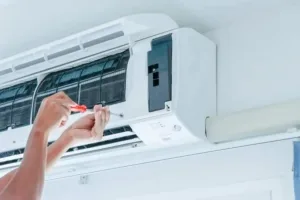How to drain a Football Pitch? Everything you need to know!

Football is the most loved sport in the US. That is why everything associated with it must be great. This applies to a football pitch as well. When there is a need to maintain or improve the condition of a football pitch and there is money invested in it, the owner of the pitch is going to track how the money gets utilized.
Why A Good Drainage Network Is Important?
An improved entrance, another scoreboard, redesigned lighting, Wi-Fi all through, a press box—those are some incredible instances of actual upgrades that add a great deal to a football stadium’s style. They’re furthermore important because they take into account acknowledgment of sponsors, donors, alumni, and different advocates, and they look great when sportswriters see them.
However, on the opposite finish of the scale is the thing that can be delegated generally imperceptible investments. They add to the playing experience, make the fieldwork better generally speaking however they’re simply not provocative. Models may incorporate new water system gear, better fencing, and better-stockpiling structures for support hardware.
At the first spot on the list of what truly makes a football field incredible (and isn’t the most un-alluring as a use) is this: drainage. All things considered, even the best Wi-Fi and the coolest scoreboard will not mean a lot if the field can’t be utilized because it’s a sloppy wreck. The helpfulness of the field and its drawn-out exhibition, just as the fulfilment of athletes and at last of the football field owner, are all attached to having a viable drainage network. Therefore, there should be some awareness about how to drain a football pitch.
What Can Be Done to Drain A Football Pitch?

In practically all cases, the response to ineffectively depleting ground lies in the pockets of sub-surface air, through which water seeps (or – on account of inadequately depleting ground – doesn’t!) Water’s development through soil, sand, or rock is moderate, with droplets leaking through the ground through one air pocket after the following.
At the point when the normal arrangement of the ground gives lacking sub-surface channels to rapidly scatter the volume of water that falls – or in any case, discovers its direction – onto a pitch, that is the point at which we should assume control over the issue and give the water the assistance it needs to move away from our game surfaces. This is the standard behind all land drainage: from customary French Drains to the traditional plastic line, to further developed arrangements. By making bigger pockets of air in subsurface channels (the channels), water can move all the more rapidly and successfully away from the territory being depleted, along these lines diminishing the immersion of the ground and moderating waterlogging issues.
Optional drainage methods likewise work on this equivalent standard, with sand/rock groups empowering water’s development through the spaces between their coarse particles, away from the playing surface, and into the essential drainage framework. ‘Earthquake’ machines work on a comparative standard, utilizing amazing vibrations to make sub-surface breaks and crevices disturbing the compacted ground and making new channels for water to all the more effectively travel through.
Presently we comprehend that drainage arrangements include the making of sub-surface pockets of the room through which water can rapidly and productively move, we are better prepared to survey which arrangements will be the most financially savvy utilization of assets in beating specific drainage issues.
-
Primary Drainage
A primary drainage framework comprises of a progression of ‘lateral’ drains introduced across the zone being referred to, interfacing with a ‘fundamental’ carrier pipe that channels the water gathered by the framework to an outfall. Up until this point, so basic.
The key deciding variables in the adequacy of primary drainage frameworks are lateral specification, drainage plan, and lateral spacing.
-
Lateral Specification
The traditional specification for lateral drains proposes punctured plastic pipes – generally 60mm or 80mm in width. It ought to anyway be noticed that 60mm pipes are getting progressively disliked, as 80mm pipes offer a more prominent all-out limit concerning the drainage framework, and just include negligibly more interruption during the establishment cycle.
Water enters the plastic line through its holes, before being diverted to outfall using the primary line. As an outcome of the size of these holes nonetheless, plastic pipes can risk blockage through the combined development of silt particles that enter the drain. Subsequently, plastic line drains must be introduced at any rate gradient of 1 out of 200, which will guarantee the speed of the water’s development through the line will be adequate to ‘flush’ the framework; in situations where these gradients can’t be accomplished – may be because of a fixed stature that a framework is to outfall to – elective arrangements should be thought of.
A few options in contrast to traditional plastic lines offer various favorable circumstances and are progressively being perceived as an exceptionally financially savvy answer for sports pitch drainage issues. The way into these advantages is it’s exceptionally designed, obstruct safe covering, which permits water to enter the drain through minuscule 140-micron distance across openings while forestalling silt penetration.
-
Drainage Design
In planning a drainage framework for a games pitch, the common falls of the land should be represented in deciding the ideal plot for the lateral drains, where the need for the positive course through the drains should be offset with their meeting surface water most viably.
If all else fails, it is in every case better to counsel a project worker with configuration experience before choosing a specific specification or design for another drainage framework, as these choices can lastingly affect the viability, and worth for-cash conveyed by a primary drainage framework.
-
Lateral Spacing
Because of the wide scope of variable components included (soil types, pitch gradients, recurrence and kind of utilization, precipitation measurements for the area, support systems, and so forth), there is no pragmatic logical equation to decide the ideal drain spacing for a specific games pitch. Notwithstanding, Hooghoudt’s Drain Spacing Equation shows that any rate increment (x) in the measure of drains will build the general drainage rate accomplished by twofold that rate (2x).
-
Secondary Drainage
In situations where utilitarian, however deficiently separated primary drainage frameworks exist, secondary drainage arrangements, for example, sand-cutting (regularly 300mm x 50mm exhumed channels loaded up with sand-over-rock) or sand-banding (non-uncovered cuts at fixed 260mm focuses, infused with sand) may demonstrate successful in empowering surface water that gets across the pitch to discover its direction all the more productively into the primary drains, in this way expanding the pace of drainage. This can loan another rent of life to a maturing draining framework, expanding the rate at which surface water can discover its way into the primary drainage framework, consequently improving its presentation at generally minimal effort.
Secondary drainage arrangements can be a superb method of conveying generally brisk, moderate, and negligibly problematic upgrades to a pitch’s drainage. Nonetheless, it ought to be noticed that – as a result of their less ‘obtrusive’ nature – secondary drainage arrangements have an essentially more limited life expectancy than primary drainage arrangements: pipes will climate the trial of time substantially in a way that is better than rock channels or sub-surface fissures, thus this ought to be considered in pondering the drawn-out expense viability of drainage proposition.
Also Read: PUBG Vs Fortnite! Which is better?








